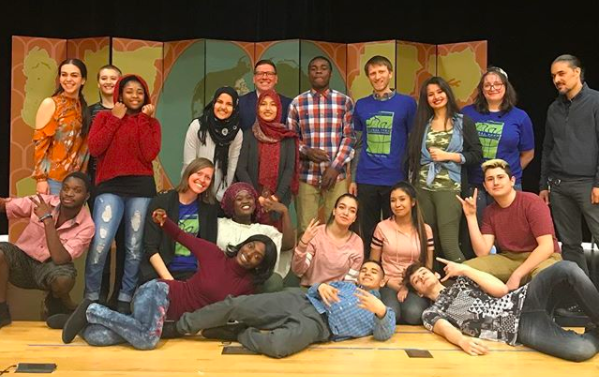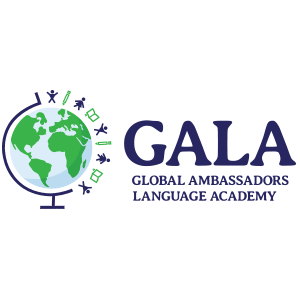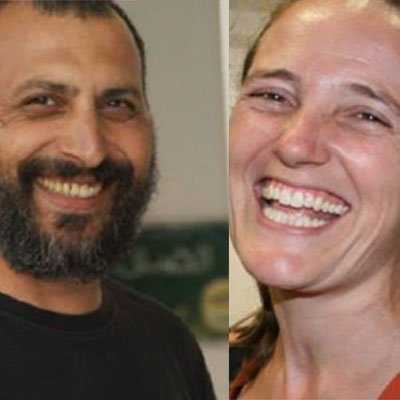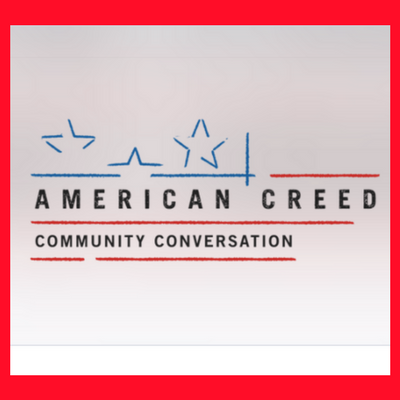Why We Are and Why We Exist
Written By Joe Cimperman
Since we last met in the newsletter a month ago, the productions of “American Dreams” and “Making Our Way” came to Cleveland. Actually they came to and through Cleveland Public Theatre. “American Dreams” made its world premier here and it was met by full houses, wet eyes, and hopefully more empathetic hearts. “Making Our Way,” also a Cleveland Public Theatre experience, was spearheaded by Global Cleveland and fueled and infrastructured by Molly Andrews-Hinders and Adam Seeholzer. Both of these stories, the first a story of a game show that illuminated the absurdity of our current immigration “system” and the despair and hope of those in it, and the latter a story written by students at the excellent Cleveland Metropolitan School District Thomas Jefferson Newcomer Academy in the heart of the MetroWest Community Development Service Area, showed snapshots of those trying to immigrate to the US or most recently having immigrated to Cleveland.
Why tell a story as old as any ancient spiritual text through plays? As the ebullient leader of Cleveland Public Theatre, Raymond Bobgan, tells me: "we believe in the power of art to change people’s lives". To that Global Cleveland says Amen and we celebrate truth through these stories. The stories of an illustrator from Pakistan (fictional, American Dreams) to the story of how Ruba and Ahmed from Iraq fled war and came to Cleveland with their siblings and parents to make a life (non-fictional, Making Our Way).
I say all the time because it’s true and because it’s important that Global Cleveland is not political. As an organization committed to welcoming, attracting, and retaining International newcomers to our Northeast Ohio Home, we take our role of working with everyone very seriously. We have friends and allies and supporters on both sides of the aisle, in the vestibule, lobby, kitchen, boardroom, and theater. From our fundamental work of welcoming over 70 ambassadors from all over the world during the RNC to our day to day interactions with hundreds of volunteers helping an international student get matched with a local company in need of talent, to being there, REALLY BEING THERE, for every single person who has naturalized in the Downtown Cleveland US Federal Courthouse since 2016, a step of becoming a full irrefutable citizen of the United States. For all of this, we touched everyone of these immigrants to accelerate and support their and their families’ and friends’ integration in our community.
Sometimes a play or a poem or a painting communicates something so very complicated in a universal way. Immigration is a powerful and complicated subject. Immigrants are one of the powers to our national American equation. We work everyday in our vocations at Global Cleveland to welcome, attract, and retain newcomers from all over the world. And there is nothing complicated about the compassion and opportunity we feel when we meet people coming to Cleveland with needed skills and gifts. Who needs these skills and gifts? We do. University Hospital and Cleveland Clinic needs them. Sherwin Williams needs them. Cleveland State University, Case Western Reserve University and John Carroll University need them. Our restaurants, our start ups, our middle market juggernauts need them. Reading the recent report on how our native born population continues to decrease, our Cleveland and our Cuyahoga County and our NorthEast Ohio need immigrants. So while we are welcoming and compassionate, it’s key to remind ourselves if we want to be as strong economically and developmentally as we can be, welcoming immigrants is what we should do for them, and absolutely should do for us.
A study was recently authored by Richey Piiparinen and it excellently details with data, facts, numbers, and real truth the economic and social positive impacts newcomers bring to Northeast Ohio. Our Governor Kasich speaks to this fact constantly. Our County Executive Armond Budish gets it. Our Mayor Frank Jackson promotes this ideal everyday. Smart leaders know that doing the right thing (welcoming, advocating, connecting) is also the most just and righteous thing as well.
To look at how Global Cleveland was founded and who was there at the beginning, I think of 3 icons. There were many mothers and fathers but these three prove our point again and again: The Cleveland Foundation under Ronn Richard, knew we had to be more and do more when it came to formalizing welcome; The Jewish Federation, under the light filled direction of Steve Hoffman, gave Global Cleveland the moral direction to always remember how Cleveland became Cleveland because of immigration, and how we can never forget the negative consequences of shutting a door, and the positive echoes of when we open our homes in our hearts; and our very own Albert Ratner, who has been at the beginning and throughout the launch of so many life affirming and life saving efforts for Greater Cleveland for decades, including Global Cleveland. At the opening of the GALA Dual Language Super School in Cleveland, Mr. Ratner was presented with a portrait and a prayer inscribed his mother used to say to him. It was transcribed in the painting:
He drew a circle that shut me out.
Heretic, rebel, a thing to flout.
But love and I had the wit to win.
We drew a circle that took him in.
For our arts and culture, for our employers and entrepreneurs and economies, for our demographics and data, for our leaders elected and forged by our immigrant and migrant DNA, for our founders and their visions that buoy us through today, for Mrs. Ratner’s prayer. This is why we are, this is why we exist. Thanks for being part of this journey. Let’s draw that circle so darn big you can see it from space.
The Top 25 Stop the Hate (R) Finalist Announced
Stop the Hate(r) Youth Speak Out is a personal essay contest with the chance to win individual scholarship money for college (schools also receive money for anti-bias education when their students win). By challenging young people to consider the benefits of a more inclusive society, the consequences of intolerance, and the role of personal responsibility in effecting change, the Maltz Museum's Stop the Hate(r) contest also reflects Jewish values of responsible citizenship and respect for all humanity.
Each year, through the generosity of a donor, the Maltz Museum gives out $100,000 in scholarships, awards, and support for anti-bias education in recognition of 6-12th grade upstanders from throughout Northeast Ohio. In 2018, the amount awarded to students and schools participating in Stop the Hate(r) will total $1 million. An estimated 30,000 students have participated in the last ten years.
The top 25 finalists for 2018 Stop the Hate(r) Youth Speak Out are:
Top 10 Juniors & Seniors, competing for grand prize of $40,000 in scholarship money:
Tadj Adams, grade 11/age 16 Hawken School
John Kunzo, grade 12/age 17 Gilmour Academy
Megan Lebowitz, grade 12/age 17, Solon High School
Peyton Lunder, grade 12/age 17, Padua Franciscan High School
Julia Mayer, grade 12/age 17, Solon High School
Dahlia Moskowitz, grade 11/age 17, Fuchs Mizrachi
Hailey Nudelman, grade 12/age 17, Twinsburg High School
Schuyler Radivoyevitch, grade 11/age 17, Cleveland Heights High School
Hannah Shuffer, grade 11/age 16, Orange High School
Maria Zou, grade 12/age 17, Hudson High School
Grades 6-10 competing for $400 awards, by grade:
6th grade
Flannery Costello, grade 6/age 11, Rocky River Middle School
Isabella Kovacs, grade 6/age 12, Rocky River Middle School
Scott O'Neill, grade 6/age 11, Newton D Baker
7th grade
Maggie Chen, grade 7/age 13, Memorial Middle School
Rebecca Lawton, grade 7/age 12, Beachwood Middle School
Jennifer Williams, grade 7/age 13, Old Trail Elementary
8th grade
Alexandra Holtz, grade 8 /age 13, Chagrin Falls Middle School
Elana Rouse, grade 8 /age 14, Rocky River Middle School
Bowen Zhang, grade 8 /age 13, Beachwood Middle School
9th grade
Jonah Gilbert, grade 9 /age 14, University School
Cara Finnegan, grade 9 /age 15, Elyria Catholic High
Rileyanna Karic, grade 9/age 14, Brecksville-Broadview Heights High
10th grade
Emi Cummings, grade 10/age 15, Laurel High School
Anaya Hunter, grade 10 /age 16, Whitney Young High School
Sabriya Zaman, grade 10/age 15, Solon High School
This year's judges for the 10th anniversary ceremony include: Toni Baker, MSM, PNC; Tai-Chi Chan, Lubrizol; Jessica Cohen, Jewish Federation of Cleveland; James Gutierrez, MD, FACP, Cleveland Clinic; Eduardo Kim, Thompson Hine; George Koussa, Margaret Wong & Associates; Monyka Price, City of Cleveland; Cecilia Render, Nordson Corporation Foundation; Phyllis Harris, LBGT Center of Greater Cleveland; Cynthia Norwood, The ARC Greater Cleveland.
The scholarship winners will be named live at the award ceremony on April 29.
The award ceremony is free and open to the public. The event beings at 4PM on April 29 and will be held at the Cleveland Museum of Art. Registrations are encouraged to guarantee seating. For more information or to register, 216.593.0575 or maltzmuseum.org
GALA: Mandarin & Spanish Immersion School, K-1 Enroll Now
GALA is a Mandarin and Spanish immersion K-8 school, tuition-free, open to all Ohio residents, and no prior language skills are required to enroll. GALA is the only language immersion school in Northeast Ohio.
Attend an Open House:
Saturday, April 28th from 10:00 a.m. to 11:30 a.m.
Please RSVP: www.GALAOpenHouse.eventbrite.com *refreshments provided*
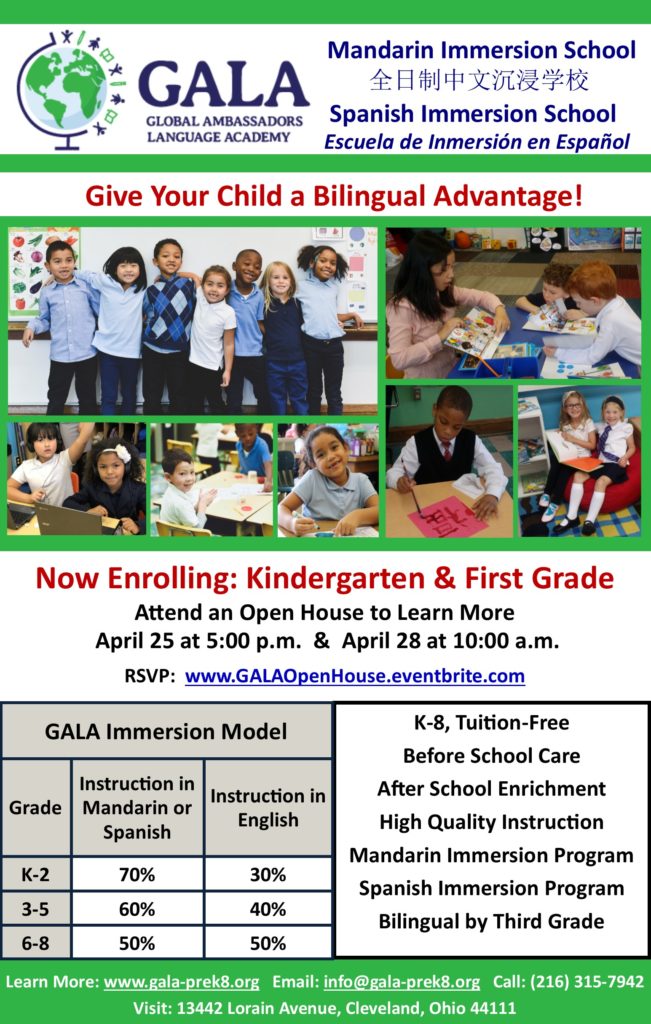
Wowed by Cleveland!
Reflections on a First Visit to Cleveland, February 2018
Mohamad: Until our visit to Cleveland, I knew little about this city. Honestly, I think the only reason I had heard about the city is because I am a big sports fan, so it was thanks to its fame as the home of the wonderful Cleveland Cavaliers!
Rebecca: And I, having lived in America mostly in California and New York - had told Mohamad when we landed that – please forgive me, but I have to be honest – that this would probably be an uninteresting Midwestern town. But how was I proven wrong!!
Mohamad: We came to Cleveland for Hand in Hand, as part of a trip to the US to increase support for the important endeavor we’ve taken upon ourselves -- building a shared society in Israel through integrated and equal education for Jewish and Arab children, supported by integrated adult communities.
Our visit was meant to be short – less than 24 hours. But our brief stopover was, in fact, the beginning of a love story with this city. The main thing that caught my attention were the people here: warm, candid, welcoming and willing to help with any question or problem. The people I met spoke a language that opened the heart and gave a strong sense of acceptance.
Rebecca: We landed at Cleveland Hopkins International Airport in the evening. It was dark outside, we were exhausted, and we dreaded the cold that we knew awaited us outside. We got to the rental car agency and a young man named Patrick greets us to begin to process our paperwork. He was probably in his early thirties, African-American, with a close-cut beard. “What is Hand in Hand?” he asks curiously when he enters in our organization’s name. He is amazed when we explain that we work with an organization that is raising Jewish and Arab children to live together. “That’s God’s work! I will pray for you!” he says. And we feel blessed.
Mohamad: Patrick was disappointed when he heard that our trip to Cleveland was so short. He told us about how diverse Cleveland is with people from everywhere, white, black, Russian, Jewish, Arab. His favorite place is the World Food Market because all the cultures are represented there. Patrick made us promise to come back so we could get to know the city better and experience its spirit.
Rebecca: He was this amazing personality and hearing him talk with such passion about his city and its people and warmth, made us say there must be something special about Cleveland!
Mohamad: The special impression we got during our chat with Patrick followed us in every one of our meetings that evening and the next day. We heard about a city policy that promotes integration of immigrants from diverse backgrounds, countries and cultures, as well as stories about people and organizations working devotedly to support disadvantaged populations. Our exposure to many social change and civic integration initiatives, combined with an astonishingly kind, friendly, and accepting attitude we found in every one of our encounters, filled us with a surprising sense of connection to Cleveland and a desire to discover more about this city. The social and communal challenges that the people we met raised made me very curious to come back, learn more and delve deeper into these issues.
Rebecca: We met with a colleague at the Jewish Federation of Cleveland who, when he heard I had worked with refugees and migration issues, lit up and said we must meet his friend Joe Cimperman and hear about Global Cleveland and see the Thomas Jefferson school. We met Joe the next day and it’s like reconnecting with an old friend, even though we are meeting for the first time. We all talk a mile a minute to share our stories and work with each other.
Mohamad and I were deeply moved to hear about the work of Global Cleveland and the school to both enrich and be enriched by immigrants and refugees. And we heard about the local Arab and Palestinian community, as well as local Jewish and Arab efforts to forge cooperation; and organizations like Salaam Cleveland, Ishmael & Isaac, and the Jewish Community Relations Council. Joe tells us about how the Jewish Federation reached out to him and his father to help take in the Kosovar refugees who were landing as new immigrants in Cleveland, since Joe’s family was from Slovenia and the former Yugoslavia.
To me these are all important examples of America’s best self in action. The real question is not what kind of problems we face, whether in Cleveland, Israel or anywhere, but what can we do about them – and there is always something to do to improve things. Our trip was too short to meet the people we were hearing about or go see more of their important work.
Mohamad: I know that there must still be an “other Cleveland”, and that like many places, Cleveland must have its tensions and groups, individuals, who are desperate to be heard, and who might chuckle at our first impressions of the city. But all of this made me leave with a desire come back again, learn and discover more about this city.
And so, dear Patrick, we hope that we will meet again at the airport, and dear Joe, that we will go together to visit all the places you wanted us to see; and meet the people you told us about, and see more of the Cleveland that you are proud of. And maybe we can even squeeze in the Rock and Roll Hall of Fame!
What is the H-1B and Why is the Government Reducing the Number Available?
The H-1B visa is a nonimmigrant visa that permits companies in the United States to hire high-skilled foreign workers. 1.8 million H-1B visas were distributed between 2001 and 2015, according to the Pew Research Center. In April 2017, as part of the “Buy American and Hire American” executive order, President Trump required scrutiny on the H-1B, and immediately USCIS took steps to limit the program.
Suspending the fast track program, called “premium processing,” that allows those applying for an H-1B to pay a higher fee to get a notice of whether their application was accepted, within 15 days, was the first thing USCIS did to limit the H-1B. With H-1B applications due in the first two weeks of April, 2018, premium processing has once more been suspended.
The H-1B is a nonimmigrant worker visa that is typically valid for 3 years and permits an employer to hire alien workers who are employed in “specialty occupations.” The H-1B visa beneficiary needs to have at least a bachelor’s degree or the equivalent. Sample specialty occupations for the H-1B include engineers, lawyers, doctors, and computer engineers. While the visa is valid for 3 years, it can be extended for a maximum of six years and then extended beyond that if the green card process has been initiated.
An employer files the H-1B petition with USCIS, but the initial step is to have the U.S. Department of Labor certify a “labor condition application” (LCA) to ensure the foreign worker will not harm any U.S. workers as far as displacement or wages. With some exceptions, H-1B petitions can only be filed during a short window of time which is this year from April 2, 2018 to April 6, 2018. Employers need to be prepared ahead of time in order to get the H-1B filed timely for their application to be part of the “lottery” which is explained below. USCIS limits or “caps” the number of H-1Bs made available each year, and currently 65,000 are available, with 20,000 additional for beneficiaries who graduated with a US master’s degree. If an application is not selected in the lottery process then the employer and employee must consider other options to either stay in the US in another status, re-enroll back to school (F-1 status) or leave the US.
H-1B extensions and petitions by public educational institutions and their nonprofit affiliates and government research agencies, known as “cap exempt” H-1Bs, are not affected by this numerical limit and are not part of the lottery.
Over the last several years, the numerical limit has been reached in the first week of H-1B filing, which typically starts on April 1 (depending on the day of the week that the 1st falls), meaning there is a “lottery” for the limited H-1B visas. If the petition is selected in the lottery and the H-1B petition is approved, the beneficiary’s H-1B classification begins on October 1 of that year. USCIS has recently increased scrutiny on cap exempt cases to ensure that there is an active relationship between the nonprofit and university and a fundamental activity of the employer is to directly contribute to the research of the affiliated university. The 2017 fiscal year cap H-1Bs met even tougher review from USCIS due to “level 1” wage assignments. If an employer used a level 1 wage in the LCA, USCIS required additional evidence to prove that the job meets the proper wage assignment for the occupation and/or that the occupation is a specialty occupation requiring a bachelor’s degree. Essentially, employers must demonstrate that the position is complex enough to qualify for an H-1B, but still suitable for Level 1 wages.
President Trump’s philosophy of improving our country includes improving opportunities for the American worker. This will likely see further pressure on the H-1B program. The President’s strategy is complex, and it may take years to determine its degree of success. I remain hopeful that foreign born will continue to find Northeast Ohio one of the best places to find work and raise their families for many decades to come.
Margaret W. Wong, Esq.
MWW Immigration Center
3150 Chester Avenue
Cleveland, Ohio 44114
[email protected]
216-566-9908
www.imwong.com
twitter: @margaretwwong
Margaret W. Wong, Esq., is an adjunct professor of law at Case Western Reserve University Law School and has been recognized as a National Asian Pacific American Bar Association (NAPABA) Trailblazer. She enjoys a “Preeminent AV” rating by Martindale Hubbell. She was attorney for President Obama’s Auntie. Margaret W. Wong & Associates LLC is a national, full-service immigration and criminal law firm with offices in Atlanta, Chicago, Cleveland, Columbus, Los Angeles, Minneapolis, Nashville, New York City, and Raleigh.
What Does it Mean to be an American?
Our country, which spans over 2,600 miles from east to west is populated by individuals of all races, ethnicities, religions, economic means, levels of education, and political beliefs. For better and for worse, Cleveland and Northeast Ohio offer a perfect example of the patchwork quilt that is America. We have suffered together, seen violence together, marched together, cried together, witnessed a CAVS victory together, and been proud of our city throughout the spotlight of the RNC together. Collectively, we make NEO our home, but what do we really know about our fellow Clevelanders? Probably not too much. If you are like majority of us, you in all likelihood spend most of your time with people who are similar to you. In today’s world, it seems harder than ever (even with an abundance of social media platforms) for people from different backgrounds to come together and learn about each other. Facing History and Ourselves and Ideastream would like to help bring residents of our region together for an intentional conversation about the promise of America in our world today and into the future.
Please join Facing History Cleveland and Ideastream for a special FREE American Creed Community Conversation with guests; entrepreneur Terrence Davenport and Marine Corps veteran Tegan Griffith, both of whom are featured in the documentary film American Creed. During our evening together, selections from American Creed will frame an on-stage discussion and audience Q&A session, engaging Cleveland community members in a dialogue about freedom, fairness, opportunity and the meaning of citizenship. This free event is sponsored by the Allstate Foundation.
In the documentary film American Creed, former US Secretary of State Condoleezza Rice and Pulitzer Prize-winning historian David M. Kennedy come together from their remarkably different life experiences, to investigate the idea of a unifying American creed. In the film, they bring together of a wide variety of Americans who discuss their own histories, perceptions, of what it means to be an American both today and into the future.
We look forward to you joining us for this important Cleveland community conversation.
To attend, register HERE: https://www.eventbrite.com/e/american-creed-community-conversation-tickets-44027331935

